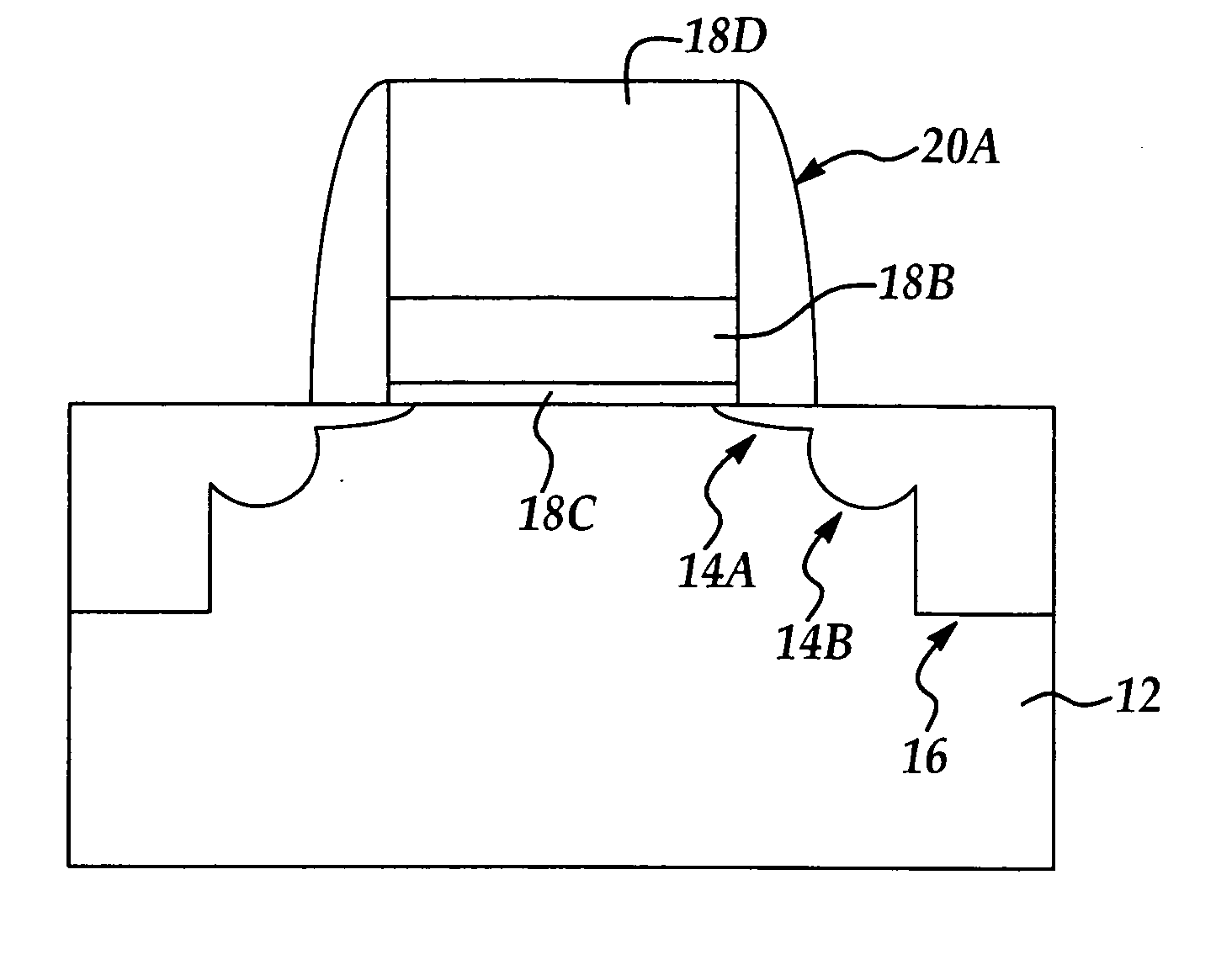Method for treating base oxide to improve high-K material deposition
- Summary
- Abstract
- Description
- Claims
- Application Information
AI Technical Summary
Benefits of technology
Problems solved by technology
Method used
Image
Examples
Embodiment Construction
[0017] Although the method of the present invention is explained with reference to the formation of an exemplary high-K gate dielectric stack, it will be appreciated that the method of the present invention may be used for the formation of high-K gate dielectrics for MOSFET devices as well as capacitor stacks in a micro-integrated circuit manufacturing process.
[0018] Although the method of the present invention is explained with reference to the use of exemplary high-k gate dielectrics it will be appreciated that the method of the present invention may be adapted for the use of any high-k material in the formation of a gate dielectric. By the term high-k dielectric is meant a material that has a dielectric constant of greater than about 10. The term “substrate” is defined to mean any semiconductor substrate material including conventional silicon semiconductor wafers.
[0019] Referring to FIG. 1A is shown a cross sectional schematic of an exemplary CMOS transistor having a high-k di...
PUM
| Property | Measurement | Unit |
|---|---|---|
| Temperature | aaaaa | aaaaa |
| Temperature | aaaaa | aaaaa |
| Thickness | aaaaa | aaaaa |
Abstract
Description
Claims
Application Information
 Login to View More
Login to View More - R&D
- Intellectual Property
- Life Sciences
- Materials
- Tech Scout
- Unparalleled Data Quality
- Higher Quality Content
- 60% Fewer Hallucinations
Browse by: Latest US Patents, China's latest patents, Technical Efficacy Thesaurus, Application Domain, Technology Topic, Popular Technical Reports.
© 2025 PatSnap. All rights reserved.Legal|Privacy policy|Modern Slavery Act Transparency Statement|Sitemap|About US| Contact US: help@patsnap.com



